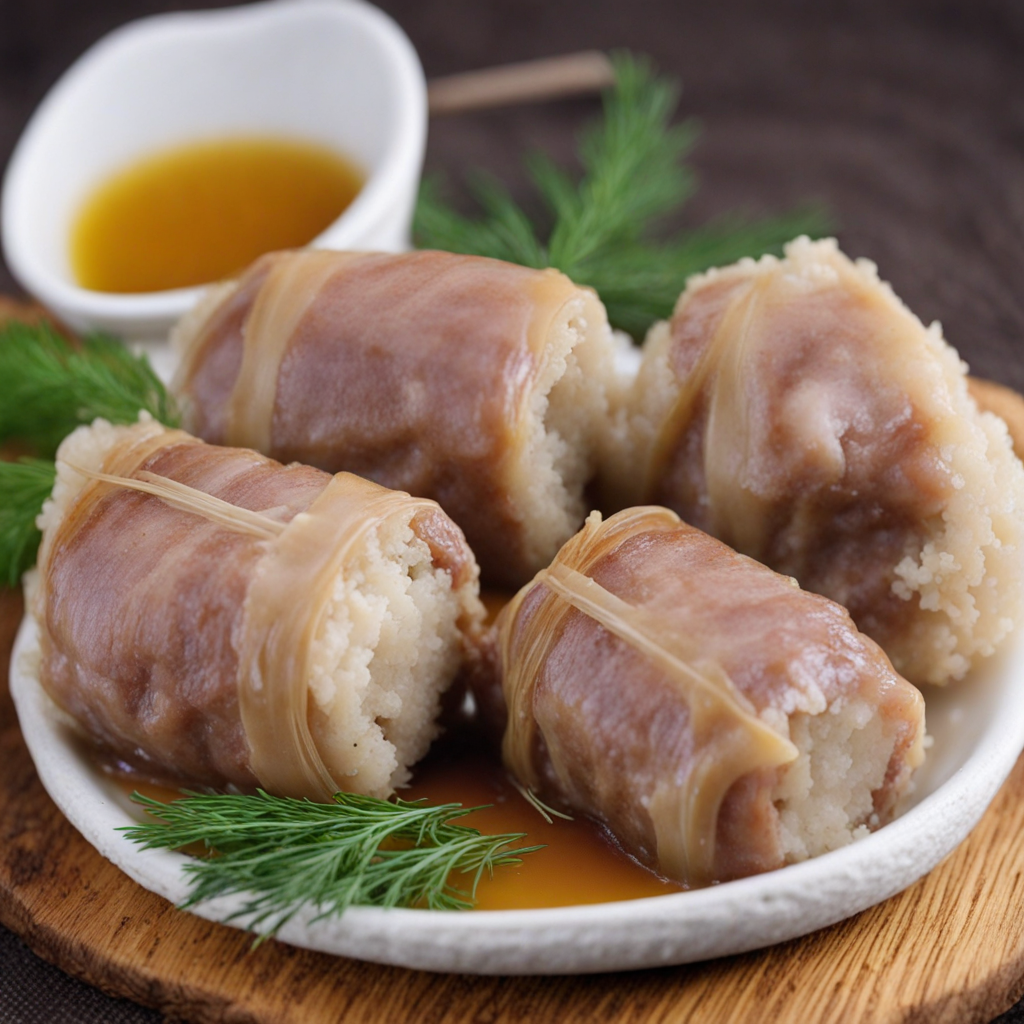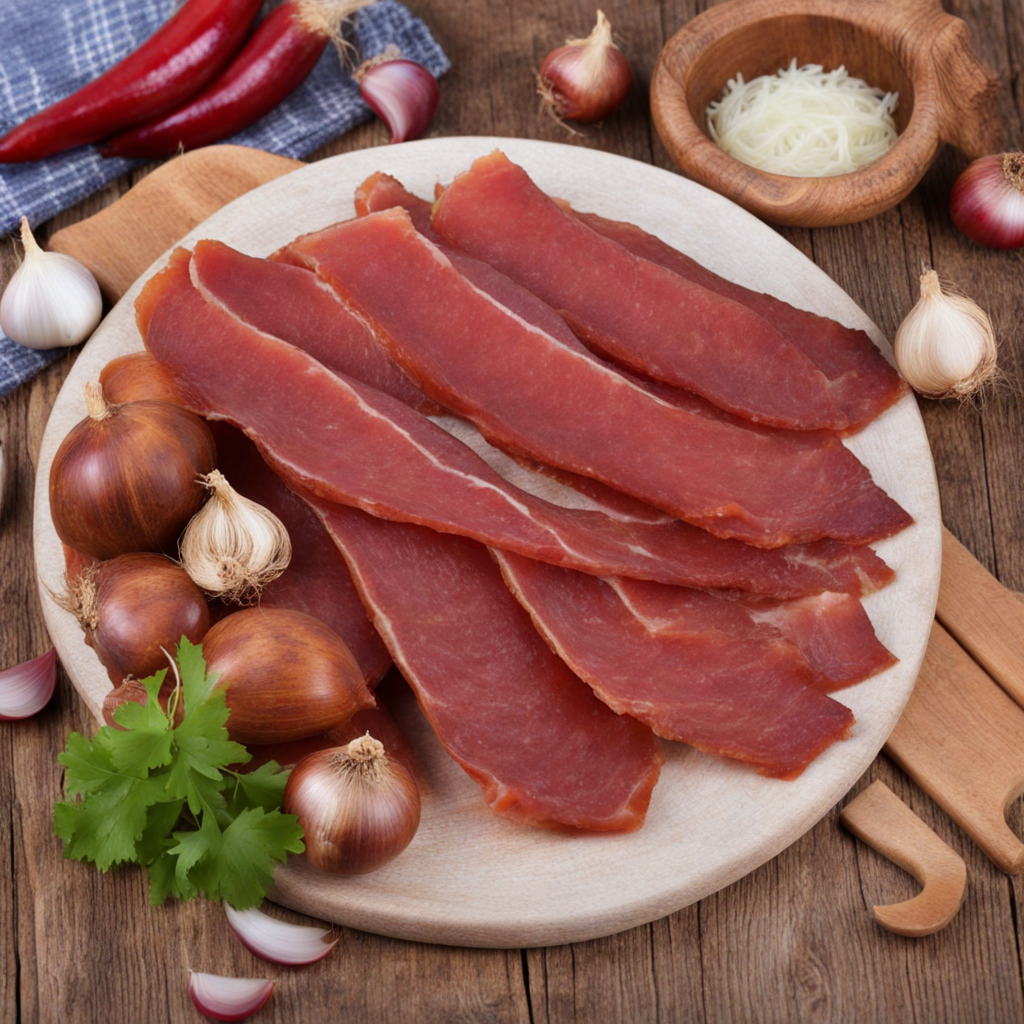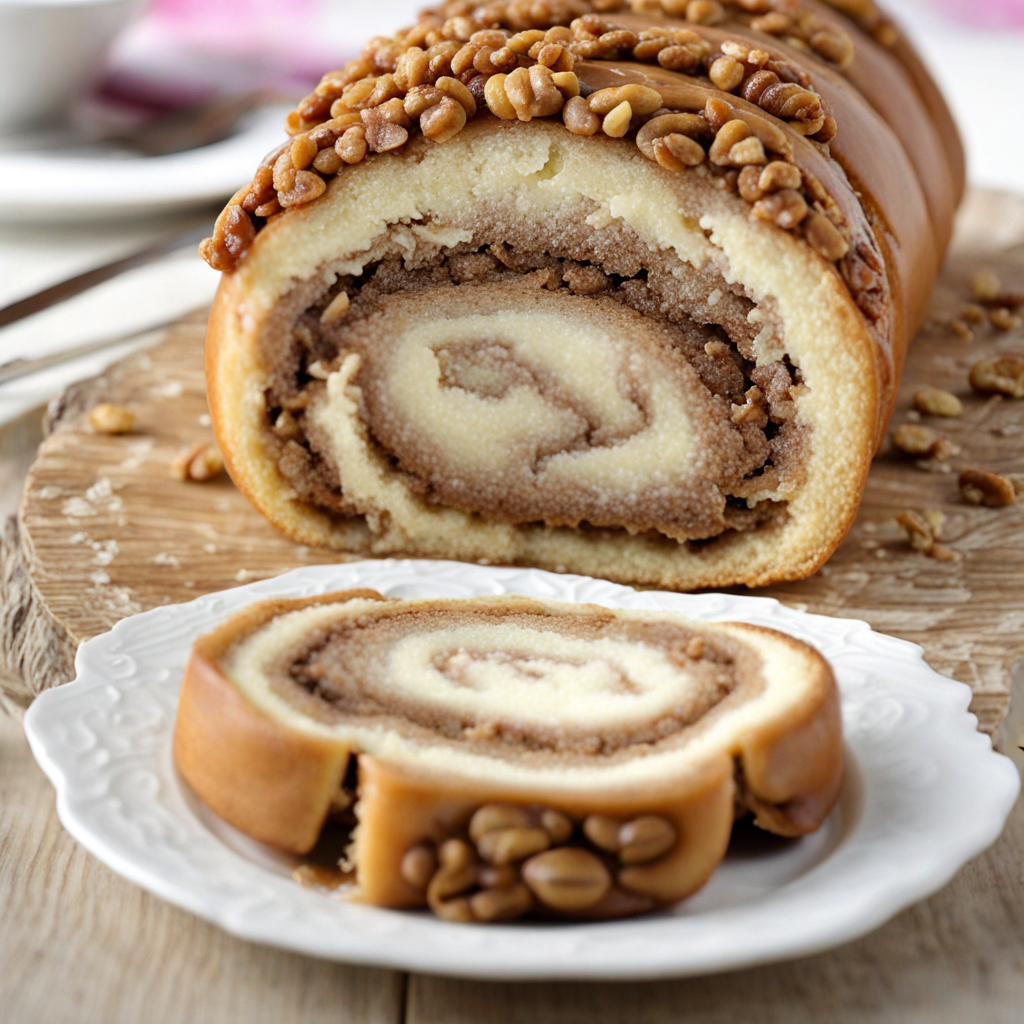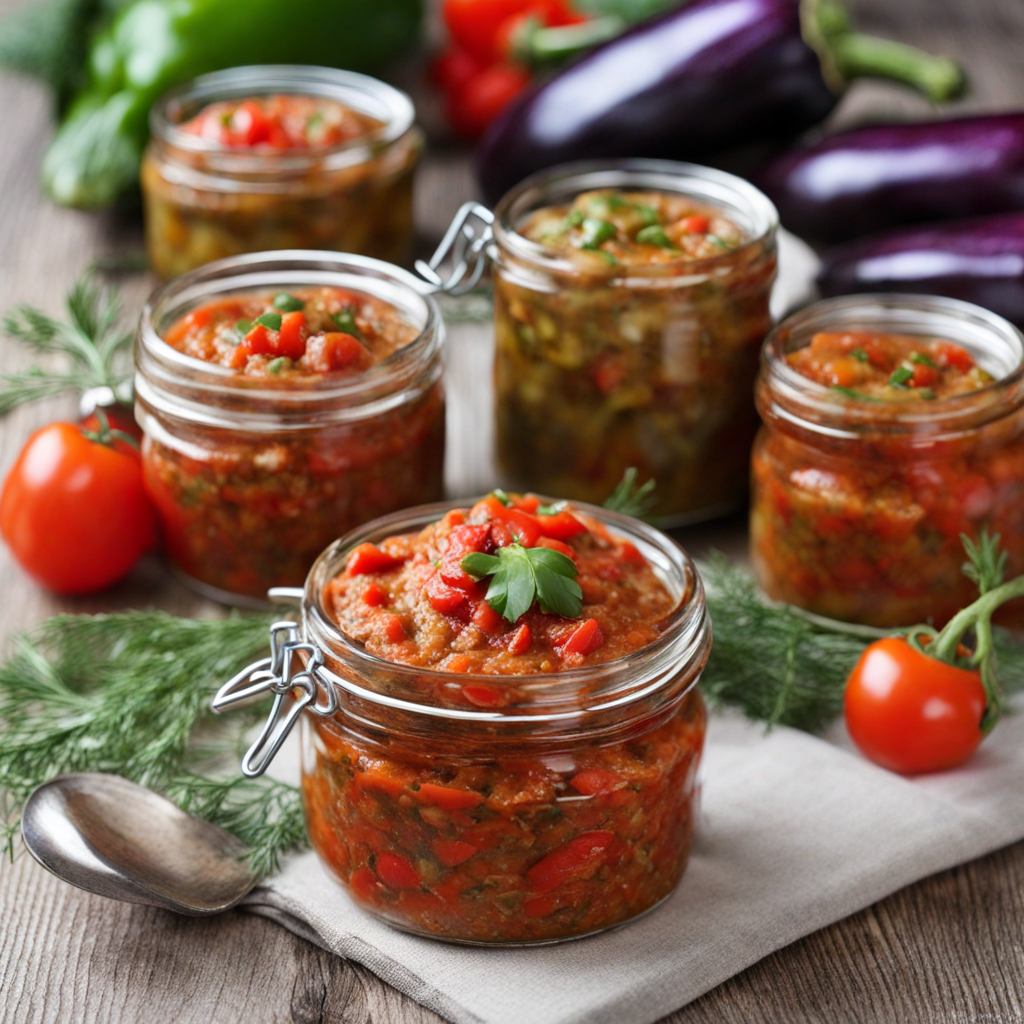Papanasi
Papanasi is a delightful Romanian dessert that offers a unique taste experience, perfect for those looking to explore new culinary horizons. These sweet dumplings are made primarily from fresh cheese, often a type of cow or sheep cheese, which gives them a rich and creamy texture. The dough is typically mixed with eggs, sugar, and a hint of vanilla, creating a subtle sweetness that perfectly complements the tanginess of the cheese. The resulting mixture is shaped into round or doughnut-like forms and then fried or boiled, leading to a crispy exterior while the inside remains soft and fluffy. The true magic of Papanasi lies in the toppings. Traditionally, they are served warm and generously drizzled with sour cream, which adds a luscious, tangy richness to each bite. Additionally, a sweet fruit preserve, often made from berries or cherries, is spooned over the dumplings, introducing a burst of fruity flavor that enhances the overall taste experience. This combination of creamy, sweet, and tart creates a symphony of flavors that dance on the palate, making Papanasi an unforgettable treat. As you savor each mouthful, you'll appreciate how Papanasi beautifully balances texture and taste. The contrast between the crispy shell and the soft filling, paired with the smoothness of the sour cream and the sweetness of the fruit preserves, offers a delightful sensory experience. Enjoying Papanasi is not just about the flavors; it's also about embracing a piece of Romanian culinary tradition, making it a must-try for anyone eager to indulge in new and exciting dishes.
How It Became This Dish
The Enigmatic History of Papanași: Romania’s Cherished Dessert #### Origins and Early Beginnings The story of Papanași, a beloved Romanian dessert, is as rich and layered as the dish itself. Although its exact origins are difficult to pinpoint, many historians trace its roots back to the 18th century, when it began to appear in culinary traditions across Eastern Europe. The name itself is derived from the Romanian word "păpană," which can refer to a round lump or a little mound, aptly describing its shape. Papanași is traditionally made from a mixture of fresh cheese, eggs, sugar, and flour, often flavored with vanilla or lemon zest. The dough is shaped into a round ball, with a smaller ball placed atop it, creating a visual resemblance to a two-tiered dessert. This simple yet delightful preparation embodies the resourcefulness of Romanian rural kitchens, where households relied on readily available ingredients. #### Cultural Significance In Romanian culture, Papanași is more than just a dessert; it is a symbol of hospitality and celebration. Found at festive gatherings, family reunions, and traditional feasts, Papanași often serves as a centerpiece, showcasing the warmth and generosity of Romanian culinary traditions. The dish is frequently accompanied by sour cream and fruit preserves, especially blueberry or cherry, further enhancing its flavor and appeal. Papanași has become a beloved representation of Romania's culinary identity, appearing in menus from rustic taverns to upscale restaurants. Its presence is felt in both urban and rural settings, making it a unifying dish that transcends social classes and regional differences. The dessert is often associated with the Romanian spirit of togetherness, as families and friends gather to share in its deliciousness. #### Evolution Through Time As Romania evolved through centuries of historical change, so too did the dish. The influences of various empires and cultures, such as the Austro-Hungarian and Ottoman Empires, left their mark on Romanian cuisine, including Papanași. For instance, the Austro-Hungarian influence brought a variety of dairy-based desserts to the region, which may have contributed to the development of Papanași as we know it today. In the 19th century, as Romania began to forge its national identity, culinary traditions like Papanași became emblematic of the country’s cultural heritage. Chefs and home cooks alike took pride in their recipes, often passing them down through generations. The dish's adaptability has allowed it to evolve while retaining its essential characteristics. Variations emerged, including baked Papanași, which are less common but provide a different texture and flavor profile. #### Regional Variations Romania is a land of diversity, and this is reflected in the regional variations of Papanași. In Transylvania, for instance, the dish may be prepared with a slightly different ratio of ingredients, resulting in a denser texture. Meanwhile, in Moldova, you might find Papanași served with a generous dollop of sour cream and a drizzle of honey, showcasing the regional palate's preferences. Each region boasts its own unique twist on the traditional recipe. Some might incorporate additional ingredients, such as cocoa powder or nuts, while others focus on the presentation, garnishing the dessert with fresh fruits or edible flowers. This adaptability not only keeps the dish relevant but also allows it to resonate with varied tastes and preferences. #### Modern Adaptations and Popularity In recent decades, Papanași has seen a renaissance, particularly among the younger generations who are eager to explore their culinary heritage. With the rise of social media and the foodie culture, this iconic dessert has gained international recognition, appearing on food blogs, Instagram feeds, and even cooking shows. Chefs are experimenting with contemporary twists, such as gluten-free versions or using alternative sweeteners, while still paying homage to the traditional recipe. Moreover, the popularity of Romanian cuisine on the global stage has helped elevate Papanași to a status beyond its humble beginnings. Food festivals and cultural events often feature this dessert, introducing it to a wider audience and allowing people from diverse backgrounds to appreciate its unique flavors. #### Papanași in the Global Culinary Landscape As the world becomes increasingly interconnected, culinary traditions like Papanași are finding their place in international kitchens. Romanian expatriates and food enthusiasts are championing the dish, encouraging its inclusion in multicultural menus and fusion cuisine. Some gourmet restaurants outside of Romania are even putting their own spin on Papanași, incorporating elements from other culinary traditions while maintaining the essence of the original. The rise of travel shows and culinary documentaries has further fueled interest in Romania's gastronomy, with Papanași often featured as a must-try dish. This exposure not only enhances the dish's reputation but also serves to educate people about Romania's rich cultural tapestry, making Papanași an ambassador of Romanian cuisine. #### Conclusion: A Dish of Heritage and Heart Today, Papanași stands as a testament to Romania's vibrant culinary heritage, representing the country’s history, culture, and the enduring spirit of its people. It is a dish that brings together generations, sparking conversations and creating connections over shared experiences. As it continues to evolve and adapt, Papanași remains a beloved staple in Romanian households, a cherished treat that embodies the flavors of tradition and the warmth of home. In an increasingly globalized world, where culinary traditions often blend and morph, Papanași serves as a reminder of the importance of preserving one’s cultural identity through food. Whether enjoyed in a cozy village tavern or at a bustling restaurant in Bucharest, this delightful dessert invites everyone to savor a piece of Romania’s history, one bite at a time.
You may like
Discover local flavors from Romania







